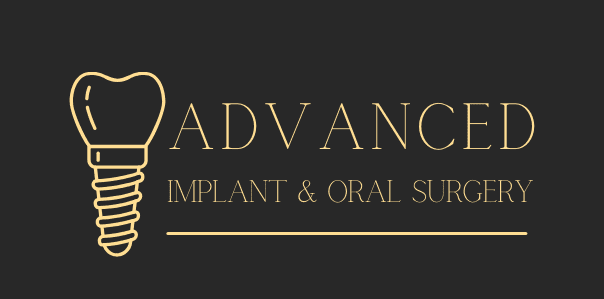ACTIVITY: After leaving our dental office today, we suggest you consider relaxing or at least limiting your activity as much as possible for an hour or two. Avoid strenuous activity and all aerobic exercise today like jogging, tennis, racket ball or lifting of heavy items et al.
ORAL HYGIENE: The best way to avoid infection and ensure proper healing is to continue with a proper oral hygiene routine. Brushing and oral hygiene procedures should be done as usual in all areas of your mouth. Removing all plaque from your teeth and brushing with a fluoride toothpaste or fluoride that we may have prescribed or given to you will usually reduce or eliminate this sensitivity in a few days.
We recommend that you rinse your mouth 2-3 times a day with a dilute solution of warm salt water (1/4 teaspoon of salt in a full glass of comfortably hot water). Do this today and tomorrow. Using too strong a salt water solution or using it more frequently can increase discomfort in your gums. Bad breath is common after this procedure and will disappear as you heal.
DISCOMFORT: As with all oral surgery, some discomfort may be present as the the anesthesia begins to wear off. Usually, a couple of Tylenol or Advil will eliminate any discomfort. Sensitivity of the gums or teeth to cold or touch is common. This should go away in a day or two.
Should intense discomfort occur at any time after this procedure, please call our office. Salt water rinsing as described above will usually minimize the possibility of gum swelling after this procedure or can help reduce it if it occurs.
INFECTION: If you notice that after a few days, pain or swelling are increasing or that you are experiencing an elevated temperature, please call our office.
SWELLING: Swelling of your face or of your gums after this procedure is not common and should be reported to our office.
BLEEDING: Slight bleeding may continue for a few hours after this procedure. This is not unusual and should stop. If bleeding persists beyond a few hours, please call our office. Most of the red color you may see in your mouth is actually a little bit of blood mixed with a lot of saliva. Blood is a very strong “dye” and a little bit of blood will color your saliva dramatically.
EATING AND DRINKING: Do not try to eat until all the anesthesia (numbness) has worn off. Your first meal should be soft. Avoid spicy, salty, acidic, very hot or very cold foods or liquids. Also, avoid nuts, chips, popcorn, hard bread, or other crunchy or fibrous foods which may become caught between your teeth. Please refrain from drinking alcoholic beverages today.
Frequently Asked Questions
Is frenectomy a major surgery?
A frenectomy is not considered a major surgery. It’s a straightforward procedure that generally takes just a few minutes and is usually done under local anesthesia. The recovery time is quick, with minimal discomfort. Most people can return to normal activities after the procedure. While it’s a minor surgery, it can significantly impact oral function and health.
How long does a laser frenectomy take to heal?
Healing after a laser frenectomy usually takes about 1 to 2 weeks. The laser causes minimal tissue damage, so recovery is usually quicker and less painful than with traditional methods. During the first few days, you may experience mild discomfort or swelling. However, this generally subsides quickly. It’s important to follow your dentist’s or oral surgeon’s aftercare instructions to ensure proper healing and prevent infection.
Is a frenectomy worth it as an adult?
A frenectomy can be worth it as an adult if you’re experiencing issues like restricted tongue movement or speech difficulties. It’s also worth it for patients with gum problems caused by a tight frenulum. The procedure can improve oral function and comfort. Many adults notice significant improvements after a frenectomy, making it a beneficial treatment in the right circumstances. Your dentist can help determine if it’s the best option for you.
Is anesthesia used for a frenectomy?
Yes, we usually use local anesthesia for a frenectomy. It numbs the area to ensure you don’t feel pain during the procedure. For children or anxious patients, we might also offer mild sedation. The procedure is quick, and the anesthesia helps make it comfortable. Your dentist will discuss the best option for your needs.
Will a frenectomy leave a scar?
A frenectomy may leave a small scar, but it’s usually minimal and often not noticeable. The use of lasers in the procedure can reduce scarring, as they promote faster healing and more precise cuts. Any scar that does form typically fades over time and blends in with the surrounding tissue. Most patients find that any scarring is not a cosmetic concern.
Does insurance cover frenectomies?
Insurance often covers frenectomies, especially if the procedure is deemed medically necessary. This includes cases where the frenulum causes speech difficulties, restricted movement, or contributes to dental issues. However, coverage can vary depending on your insurance plan and the reason for the procedure. It’s important to check with your insurance provider to understand your coverage.
We want your treatment to provide as positive a healing experience as possible. If you are having any problems or have any questions not covered in these guidelines, please feel free to call the office at any time. D. Bradley Dean, DDS can be reached after hours at 1-866-248-8350.
